Giving Tuesday (November 29) is when the rubber really hits the road, and we’ll get our first clear read of how recent economic challenges are likely to affect donor behavior for the full year-end giving season and beyond.
With levels of economic concern at a high, and October numbers across the industry looking low, we surveyed 1,873 Americans following the midterm elections to get a quick read on how they’re thinking about their giving.
In particular, when drilling down on those who intend to give in December, there are clear patterns in the causes that donors are planning to donate to, the amount they are planning on giving, and when donors will decide when to make their gift.
We should offer caution that any study of this nature is limited because we’re asking people how they think they’ll behave, rather than reporting on how people actually made decisions. And from the live data we’re observing in our work, we see many strong headwinds that are currently affecting performance.
That said, here are the stand-out and surprising nuggets of information:
Fifty-nine percent of Americans plan to make a gift in December. As this is the first time we’ve run this study, we don’t have a direct year-over-year comparison or baseline on this data point. However, we do note this survey that states that 56% of Americans gave a charitable gift in 2021. The spread of those planning to donate in December skews heavily to the older generations, which tracks with the donor demographic breakdown that many nonprofits see, especially at this time of year.
Q: Will you give to non-profit charities this December (2022)?

We’ve been anticipating donors giving to fewer charities — for example, dropping their secondary or tertiary gifts. This would likely have had a larger impact on less-known non-profits. However, the data suggests that the majority of donors plan on making the same number of gifts, with just 5% planning on making fewer donations. With 27% of year-end donors marking “I don’t know” or “I don’t plan in advance,” there’s still potential for a significant drop in the number of gifts donors make. But this data is telling us it could go either way, so we shouldn’t despair just yet – in fact, we should work harder to persuade those donors who are on the fence.

For those planning on donating, the survey also tells us about the amount donors are intending to donate. This remains broadly flat year over year across all donor age groups with a marginal lift for “more” as a combined figure across all of the age groups.
Q: Are you planning to give more or less to charity this December (2022) than last year (2021)?
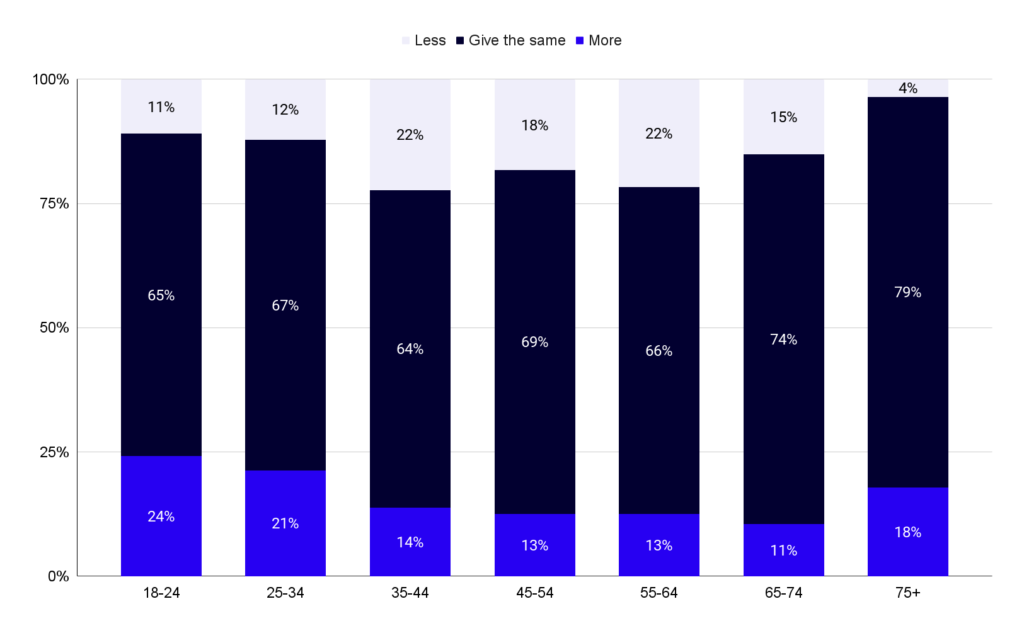
Heavy levels of giving around the war in Ukraine and other emergencies may not cannibalize traditional end-of-year giving patterns.
Among those who plan on giving less, the primary factor is personal financial issues or broader economic issues – not because they have “maxed out” their financial contributions for the year. Given the high levels of funds already donated to Ukraine in 2022, this result surprised us; moreover, it could underline the significance of the economic stress that these donors are feeling.
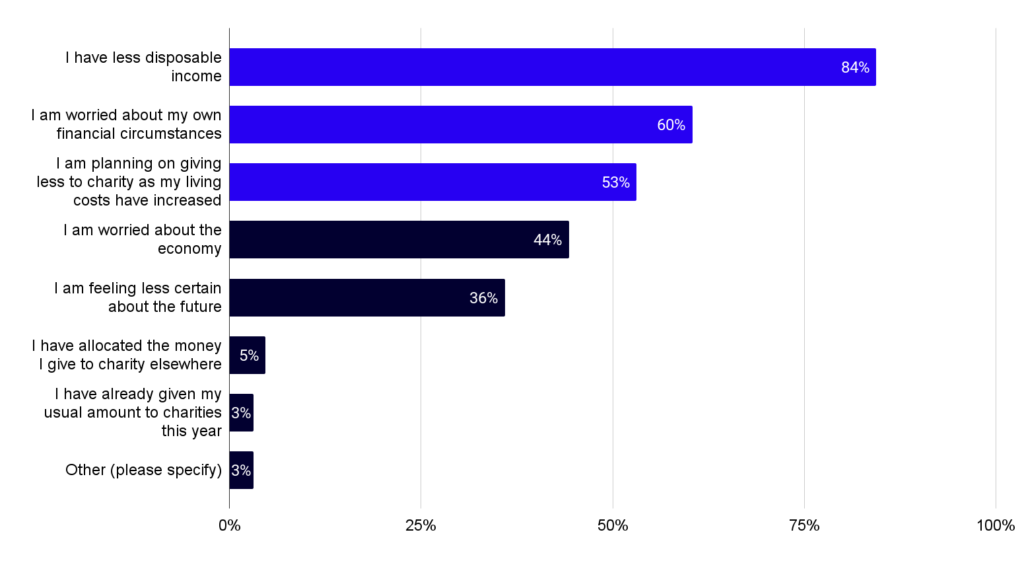
Older donors have made their donation decisions already. Younger donors are more easily influenced in the year-end period, with older donors having already decided where to invest their generosity. This longer-term thinking within older demographics shows the importance of providing a premium experience to donors year around.
Q: Have you already decided which charities you would like to give to this December (2022)?
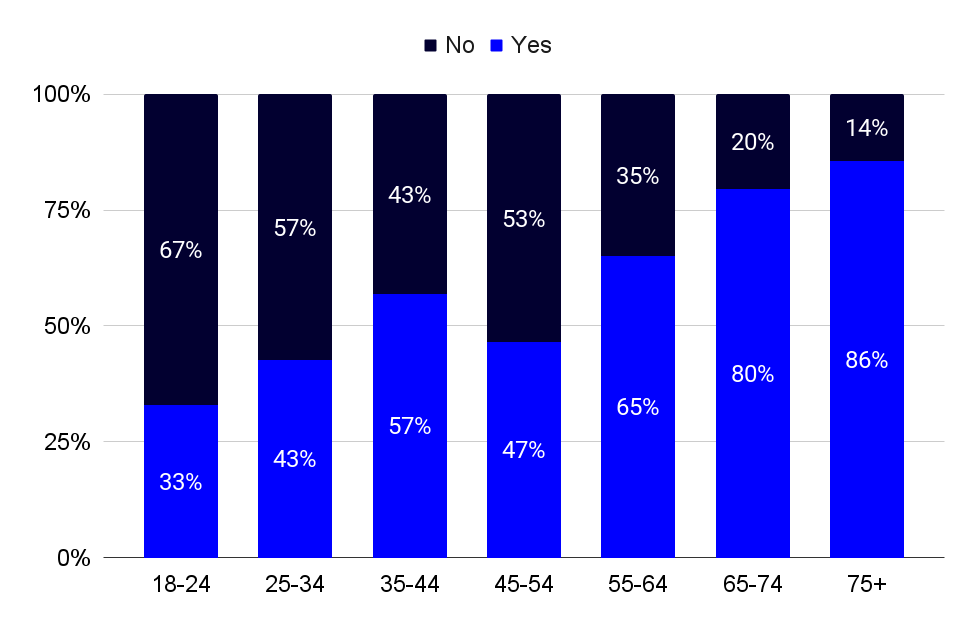
But the type of year-end campaign you run this year will still matter. Younger donors are less set in who they will support, in general, and economic turmoil will likely make this even more true. This means it may be difficult to retain younger donors, but it also means younger donors could easily be persuaded to join your cause. Making sure your organization stands out, in both message and need, will be vital to winning these donors’ support. Additionally, visibility and frequency in your messaging will be vital in converting those undecided donors: going dark from Giving Tuesday through to December 31st will be a substantial miss.
Among older donors, who traditionally give higher amounts, giving patterns are more stable than among younger donors. The convention of tradition may provide a substantial benefit for organizations with long-term donors and older donors who have already committed to making the same gift each year. For this audience, you may want to consider targeting those who give annually with a higher proportion of reminder messaging, rather than telling a broader “discover” narrative about the organization.
Q: When do you typically decide which charities to give to?
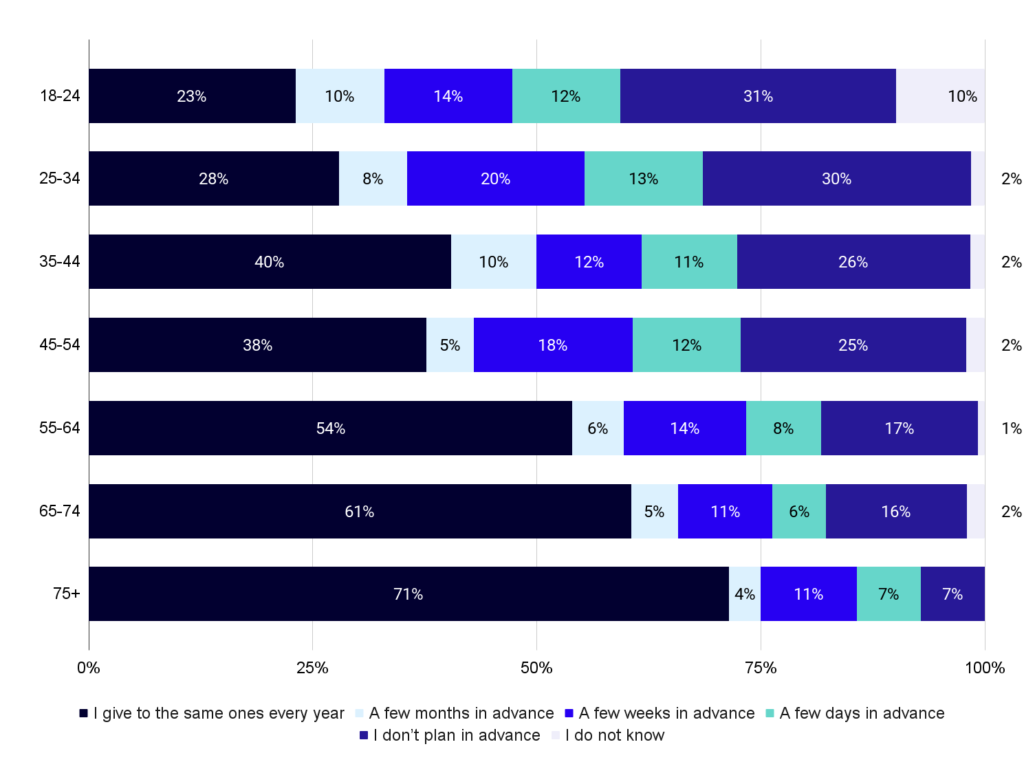
The spread of issues is likely going to lean domestic, rather than international. Food banks saw a huge boom in 2020 as well as during past recessions. Children and youth, animals, homelessness – these were the top giving causes across all age groups.
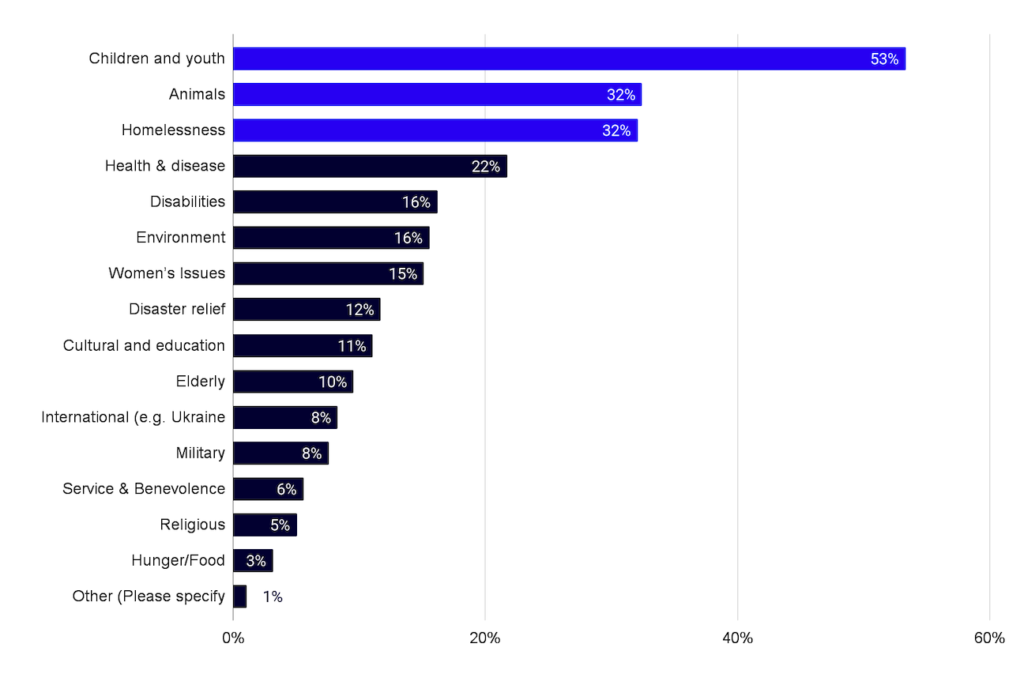
So what does this all mean?
We know that people will often paint a more rosy picture of their intent than actually gets delivered in reality. So we should view these numbers with a substantial pinch of salt.
And we know that the numbers we’re presenting are running contrary to many economic indicators and our own lived experiences in the past recent months — so the potential for egg on the face factor may be high. That said, we think sharing this knowledge is important; the results may be right. They may be an outlier. But they certainly are interesting.
We may be looking at an environment in which the mainstay of nonprofit giving — economically established older donors — are not planning a seismic shift in their behavior.
We may also be looking at a moment of opportunity for nonprofits to grab a larger share of younger donors who are committed to giving but are yet to make up their minds on where their gifts will go.
No matter what transpires in the coming weeks, nonprofits need to focus decisions on long-term outcomes that will define the health of the relationships they enjoy with their supporters for many years to come. These relationships won’t end on December 31st: Our task is to nurture decades-long loyalty, not churn and burn through lists.
Ultimately, that comes down to being respectful, thoughtful, and authentic in the experiences you build for your most important people. Good luck for Giving Tuesday and beyond!